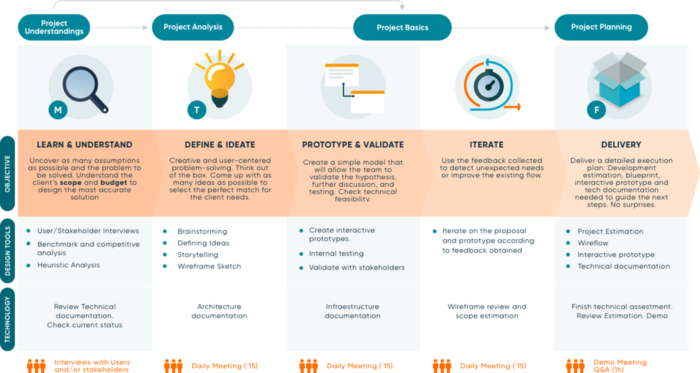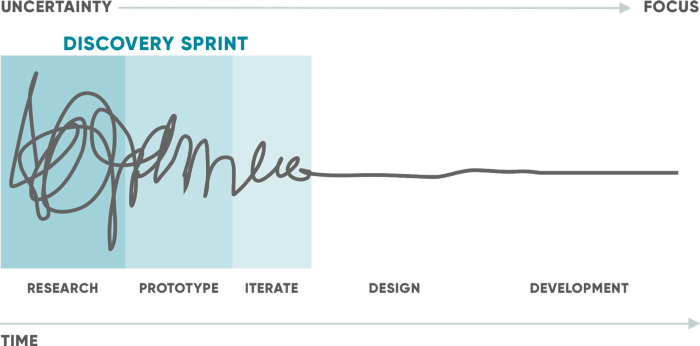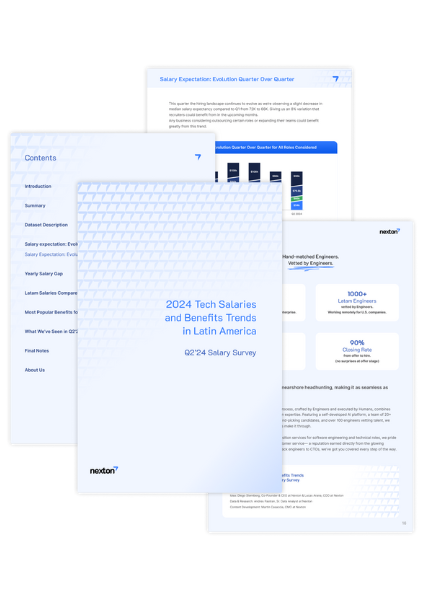The Discovery Sprint is a process that occurs at the early stages of a project and it’s designed to guide the team in defining the problem to solve and propose innovative solutions for it. It’s an ordered way of research and process the data obtained that will help to reduce uncertainty and speed up the creation of a product aligned with the business objectives, scope, and budget.
The experts in key areas (Product, UX, Tech) will work together as a multidisciplinary team throughout the Discovery Sprint to understand and define:
- The final goal (what the client wants to achieve, and how it will look like). This stage also serves to get a consensus among all stakeholders about the desired outcome.
- The current state (What does the client has today, product, systems, tools, processes, etc.)
- The gap: What we need to research, create and develop to bring our client from his existing situation to the desired outcome.
Discovery Reduces Uncertainty
When a project is starting, there is a lot of uncertainty. It is not only that there is some information that is not known, but also there can be information gaps between different parts of an organization, a lot of assumptions that aren’t verified and a lack of a shared vision. All these issues can be counterproductive to the project if they are not identified in time.
The discovery sprint works on bringing a common goal and direction to the team and provide all team members with a shared vision. It also serves to identify in time any potential obstacles that may appear in the following sprints that can delay or damage the project.
It also works on consider how the project fits into the clients’ current infrastructure and processes, and the team has the chance to give advice on what should be changed, improved or updated to make the current and the new to work together successfully.
How does it work?
Within a week, the team has to work on different stages, each one of those will bring light over the current uncertainties and will provide definitions about what is need to be done. Documentation will be produced to collect all the key insights found along with any follow-up actions that need to be further explored/answered.
The discovery sprint stages:
- Day 1: Learn & Understand. At this stage, our team will uncover as many assumptions as possible and define the problem to be solved. Also, they will review all the existing technical documentation, all the system’s current status and will work on defining the most accurate solution for the client’s needs, scope and budget.
- Day 2: Define & Create. This is the moment to think out of the box. Our team will come up with as many ideas as possible through creative and user-center problem-solving thought to select the perfect match for the clients’ needs.
- Day 3: Prototype & Validate. From the selected idea, the team will create a simple model that will allow stakeholders to visualize and validate the end deliverable, will provide the opportunity for further discussion and determining its technical feasibility.
- Day 4: Iterate & Refine. From the feedback collected from the previous stage, we will be able to detect unexpected needs or improve the current flow.
- Day 5: Delivery. The process of the discovery sprint will converge on a detailed execution plan that will allow the client to know what is going to build and have the certainty that is something aligned to his business and users’ objectives. A blueprint from the project, an interactive prototype, the development estimation and the technical documentation required to guide the next steps of the project.
Based on the Design Squiggle by Damien Newman to show how uncertainty is reduced during a discovery Sprint, to start with the production with a clear vision and a detailed plan of how to achieve it.
Documentation such as this helps to align all project stakeholders around what the scope of the project is and what the desired end goal looks like.
The final goal of a discovery sprint is to define:
- What are we going to build (The solution: a website, an app, an update on the current product, etc.)
- Why are we going to build it (What business/user problem are we solving by building it, what do we expect to change by building it)
- Who are the key people needed for work on it
- How many time, money and effort are we going to need to bring it to life.
At the end of the discovery sprint, with a clear and shared idea of the main objective, artifacts like wireframes and tech documentation that gives the stakeholders visibility of the scope and the shape of the project, uncertainty is reduced dramatically. The team is now ready to start the design and develop stage to bring it to life.





